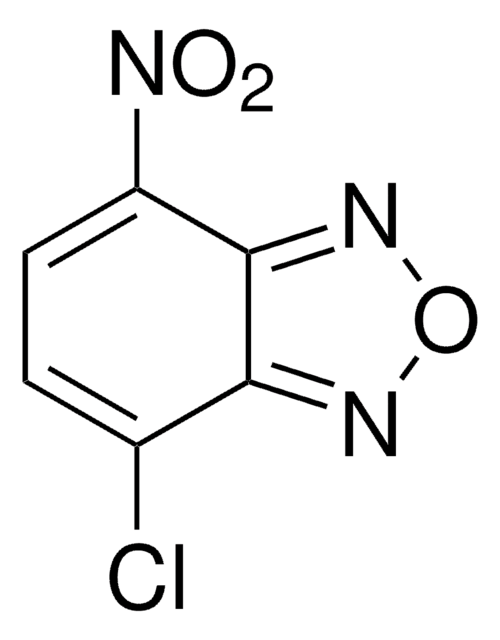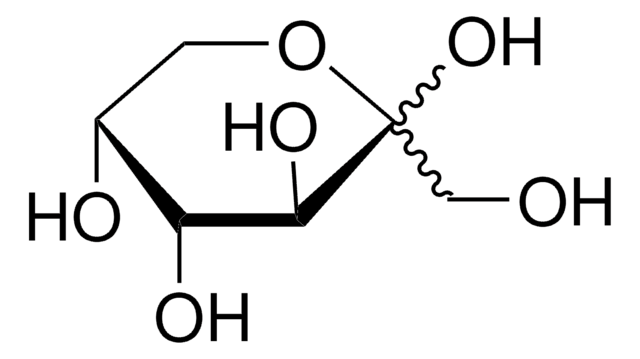All Photos(1)
About This Item
Empirical Formula (Hill Notation):
C17H20N4O5S
CAS Number:
Molecular Weight:
392.43
MDL number:
UNSPSC Code:
12352202
PubChem Substance ID:
NACRES:
NA.77
Recommended Products
form
powder
Quality Level
color
white
solubility
DMSO: 5 mg/mL, clear
SMILES string
CCCN1C(=O)N(CCC)c2nc([nH]c2C1=O)-c3ccc(cc3)S(O)(=O)=O
InChI
1S/C17H20N4O5S/c1-3-9-20-15-13(16(22)21(10-4-2)17(20)23)18-14(19-15)11-5-7-12(8-6-11)27(24,25)26/h5-8H,3-4,9-10H2,1-2H3,(H,18,19)(H,24,25,26)
InChI key
IWALGNIFYOBRKC-UHFFFAOYSA-N
Gene Information
human ... ADORA1(134), ADORA2B(136), ADORA3(140)
rat ... Adora1(29290), Adora2a(25369), Adora3(25370)
Biochem/physiol Actions
Water soluble adenosine receptor antagonist with slight selectivity for A1 receptors.
Storage Class Code
11 - Combustible Solids
WGK
WGK 3
Flash Point(F)
Not applicable
Flash Point(C)
Not applicable
Personal Protective Equipment
dust mask type N95 (US), Eyeshields, Gloves
Choose from one of the most recent versions:
Already Own This Product?
Find documentation for the products that you have recently purchased in the Document Library.
Teresa Sousa et al.
European journal of pharmacology, 441(1-2), 99-104 (2002-05-15)
The continuous infusion of 1,3-dipropyl-8-sulfophenylxanthine (DPSPX), a non-selective antagonist of adenosine receptors, causes hypertension and marked cardiovascular structural changes in Wistar rats. Adenosine inhibits noradrenaline and renin release. We investigated the effects of sympathetic denervation, evaluated renin activity and the
C J Tseng et al.
Journal of biomedical science, 8(5), 389-394 (2001-09-11)
Adenosine was shown to inhibit norepinephrine (NE) release from sympathetic nerve endings. The purpose of this study was to examine whether endogenous adenosine restrains NE and epinephrine release from the adrenal medulla. The effects of an adenosine receptor antagonist, 1,3-dipropyl-8-(p-sulfophenyl)
E K Jackson et al.
The Journal of pharmacology and experimental therapeutics, 295(1), 23-28 (2000-09-19)
The purpose of this study was to investigate whether the extracellular cAMP-adenosine pathway (i.e., transport of cAMP out of cells followed by extracellular conversion of cAMP to adenosine) exists in preglomerular microvessels (PGMVs). Incubation of PGMVs for 1 h with
Y Ren et al.
Kidney international, 59(1), 222-229 (2001-01-03)
Afferent and efferent arteriole resistance exerts critical and opposite actions in the regulation of glomerular capillary pressure (PGC) and glomerular filtration rate (GFR). Tubuloglomerular feedback (TGF) plays an important role in the regulation of afferent arteriole resistance; however, the role
Monika Sundqvist
American journal of physiology. Regulatory, integrative and comparative physiology, 292(5), R1916-R1925 (2007-02-03)
Little is known about the purinergic regulation of intestinal motor activity in amphibians. Purinergic control of intestinal motility is subject to changes during development in mammals. The aim of this study was to investigate purinergic control of intestinal smooth muscle
Our team of scientists has experience in all areas of research including Life Science, Material Science, Chemical Synthesis, Chromatography, Analytical and many others.
Contact Technical Service








